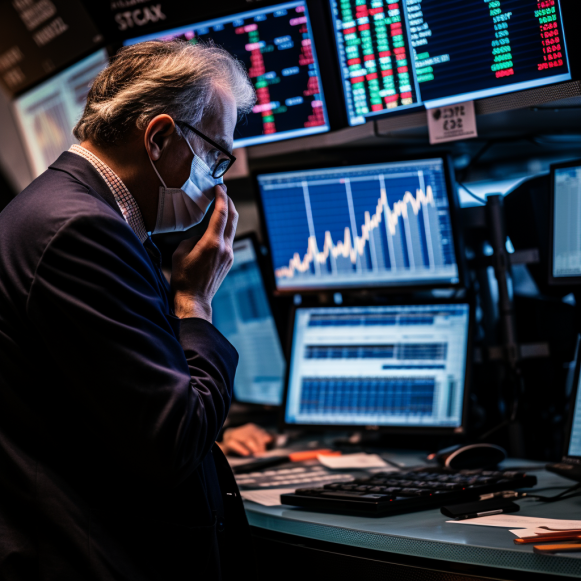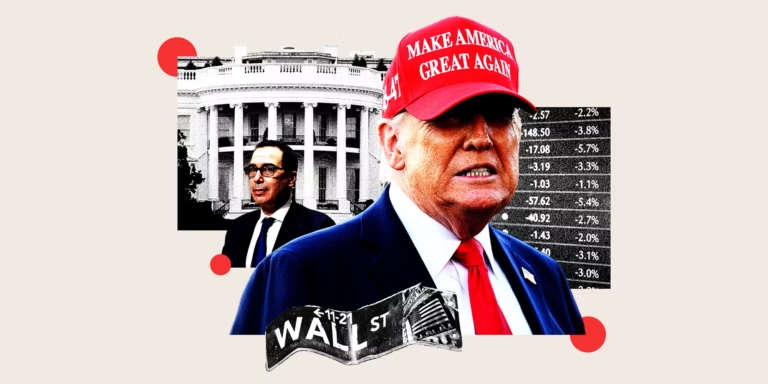A renowned market bear who called the dot-com bubble shares 3 warning signs that the economy is crumbling despite upbeat data, putting stocks at risk of further downside

- Societe Generale’s Albert Edwards is warning the economy is in rough shape despite macro data.
- He pointed to rising bankruptcies and poor credit conditions as evidence of further weakness ahead.
- Edwards called the dot-com bubble bust around the turn of the century.
So far, 2023 appears to be an incredible year for the US economy.
The current unemployment rate is 3.8%. In September, the US economy added 336,000 jobs. Year to date, the S&P 500 is up 7.6%. In Q3, GDP increased by a staggering 4.9% year on year. Despite the Federal Reserve’s aggressive rate-hiking campaign, all of this occurred.
However, Albert Edwards, Chief Global Strategist at Societe Generale, who predicted the dot-com bubble over two decades ago, urged investors to look beyond the headline numbers. This reveals a more frightening reality about where the US economy currently stands.
“I’m very much a macro-man, but I recognize that the macro data is disguising the depth of pain the Fed has inflicted on the economy, which will soon be obvious to all,” Edwards wrote in a note to clients on October 26.
Begin with bankruptcy data, Edwards advised. Bankruptcy filings are higher this year than they have been since 2010.
They’ve also increased by 61% this year alone. It’s even worse for smaller businesses, which have fewer cash reserves and are more vulnerable to higher interest rates.
“Bankruptcy experts believe that many businesses are on the verge of filing for bankruptcy. “Post-GFC QE and direct Covid pandemic relief kept many zombie companies on life support,” Edwards said. “But now the sharp rise in rates is causing a surge in bankruptcies beyond one’s worst Freddie Kruger nightmares.”
Then there’s the lack of analyst optimism. Only about 40% of changes in analyst ratings for S&P 500 companies are upgrades. According to Edwards, in new economic cycles, that number is typically 60-70%.
Credit conditions for small businesses are also in jeopardy. Credit terms refer to how easy it is for a company to obtain a loan. According to Edwards, the National Federation of Independent Business’ index on small business credit conditions is exactly where it was at the start of previous recessions.
According to him, this typically means lower profits and a softening labor market.
“The notion that we are at the start of a new economic cycle seems preposterous to me,” Mr. Edwards said.
Is a recession really on the way?
As economic data continues to come in strong, it’s becoming more difficult to predict a recession in the near future.
Nonetheless, traditional leading recession indicators continue to point to further weakness.
The Institute for Supply Management’s Purchasing Manager’s Index, which measures manufacturing activity in the United States, is in negative territory. For months, the Conference Board’s Leading Economic Index has been in recession territory, combining indicators such as consumer sentiment, manufacturing activity, stock and bond market performance, housing market activity, and lending activity. In addition, the Treasury yield curve remains inverted, with 3-month yields higher than 10-year yields. The latter two indicators have a perfect track record of predicting recessions over the last several decades.
However, the current economic cycle is unprecedented in many ways, given the massive amounts of stimulus pumped into the global economy in recent years and the vast labor shortages that the US economy now faces, with over nine million open jobs. These could imply that, despite the warning signs, the United States can avoid a recession.
However, the longer the Fed keeps interest rates high, the greater the risk of a recession. While inflation has declined significantly, it has shown a small resurgence in recent months, possibly necessitating a consistently hawkish Fed.
What does this mean for the stock market?
While the S&P 500 is up more than 7% this year, Edwards sees it as yet another data point masking the economy’s true health.
This is due to the so-called “Magnificent 7” stocks — Apple, Meta, Amazon, Microsoft, Nvidia, Tesla, and Alphabet — accounting for the majority of the index’s returns this year. According to Edwards, the returns of the S&P 500 equal-weighted index, which is down 5% this year, demonstrate their outsized contribution to the index’s performance. The performance of each individual S&P 500 constituent has the same impact on the overall index performance in the equal-weighted index. The largest companies have a greater influence on the market-cap-weighted index.
The Russell 2000’s poor performance, down 6.5% year to date, is another sign that the economy’s smaller companies are struggling, he said.
If small businesses continue to deteriorate and many go bankrupt, as Edwards predicts, stocks will suffer. Edwards emphasized that firms with fewer than 100 employees typically account for half of job growth. If bankruptcies continue to rise, the labor market will suffer.
And labor-market difficulties are likely to translate into a recessionary environment. According to RBC Capital Markets, recessionary bear markets have historically resulted in a 32% decline. It remains to be seen whether Edwards’ scenario comes to fruition.






